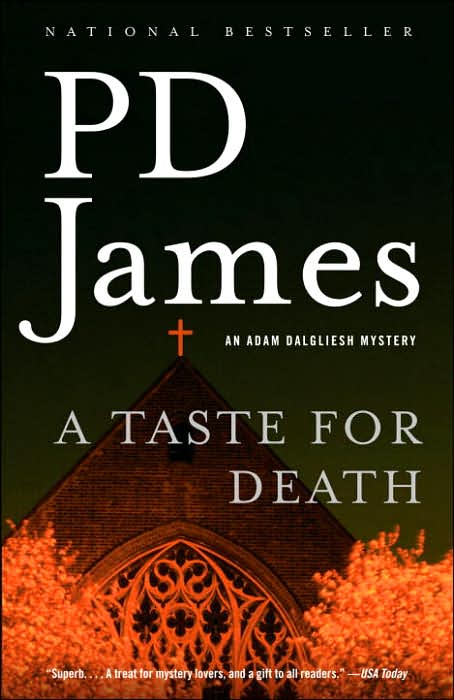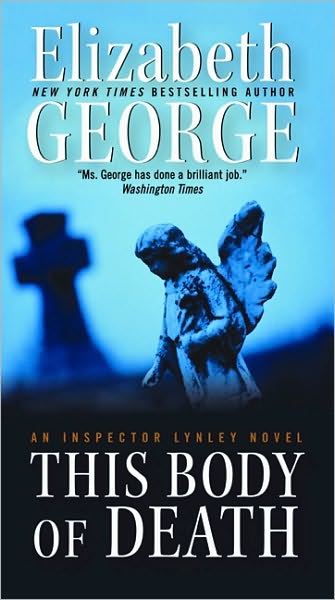
In A Taste for Death, the seventh in this series, two men are discovered with their throats slit in a London church, Commander Adam Dalgliesh of New Scotland Yard is called upon to solve the case. One victim is Sir Paul Berowne, former Minister of the Crown; the other is a tramp accustomed to sleeping on the porch of the church. Almost no one but Father Matthew cares about the tramp, but Berowne's death creates mental gyrations for well-to-do women across London.

“Murder is the first destroyer of privacy as it is of so much else.” It is for Commander Adam Dalgliesh, with DCI John Massingham and DI Kate Miskin, to employ his detecting talents to invade the privacy of all involved, to puzzle out intricately linked details across the various strata of society, and to ferret out the perpetrator of the double homicide.
The characters here read Anthony Trollope and Philip Larkin. They are knowledgeable about architecture and art; they have highly developed sensibilities. James's civilized digressions do not detract from the suspense of the plot. She does not employ horrific details for shock. Her clue-by-clue description of procedural details, particularly those of forensic medicine, makes readers part of the ongoing investigation.

In delving into what she calls “the fascination of character,” P.D. James makes each actor in the drama memorable. And apart from the mystery, A Taste for Death explores the remnants of the British class system as it crumbles, the old guard represented by Lady Ursula grimly hanging on to the past, and Kate Miskin determined to sweep away all vestiges of her upbringing and to create a new life. It is a well-crafted opus with precise prose, rich settings, complex and believable characters with a wide range of emotions, and a finely-wrought plot . Like Elizabeth George, and as in all her other books, P.D. James achieves so much more than a mere whodunit.
Keira Soleore is an aspiring Medieval & Regency historical romance writer and the comments moderator for IASPR’s Journal of Popular Romance Studies. On the web, she can found at Cogitations & Meditations, on her website, and onFacebook. She also tweets.
